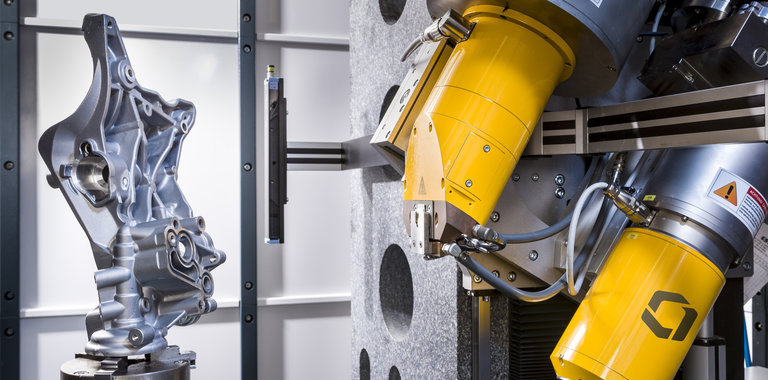
What are the characteristics of an X-ray film?
In this article:
- X-ray Film Characteristics Are Defined by Sensitometry: The article explains how sensitometry—the study of photographic film properties—governs key characteristics like density, contrast, and exposure response in radiographic imaging
- Optical Density Measures Film Darkness: Density (D) is calculated as the logarithmic ratio of incident to transmitted light (D = log₁₀(I₀/Iₜ)), and is used to quantify the blackness of developed film, typically ranging from 0 to 4 in industrial radiography
- Contrast Determines Image Sharpness: Radiographic contrast is the difference in density between adjacent areas on the film, influenced by the film’s emulsion type and exposure conditions. High-contrast films reveal finer defect details
- The Characteristic Curve Visualizes Film Response: This curve plots density versus exposure and includes three regions—toe, straight-line, and shoulder—each representing different sensitivity zones of the film
- Film Gradient Indicates Contrast Performance: The slope of the characteristic curve, known as the film gradient (GD), quantifies contrast performance and helps compare different film types for specific non-destructive testing (NDT) applications
The use of X-ray film and the definition of its characteristics call for an adequate knowled- ge of sensitometry. This is the science which studies the photographic properties of a film, and the methods enabling these to be measured. The density (or blackness) of the photographic layer, after development under closely def- ined conditions, depends on exposure. By exposure is meant a combination of radiation dose striking the emulsion, that is to say intensity (symbol I) and the exposure time (sym- bol t). In sensitometry, the relationship between exposure and density (I.t) is shown in the so-called characteristic curve or density curve.
Density (optical): When a photographic film is placed on an illuminated screen for viewing, it will be observed that the image is made up of areas of differing brightness, dependent on the local optical densities (amount of silver particles) of the developed emulsion. Density (D) is defined as the logarithm to base 10 of the ratio of the incident light Io and the transmitted light through the film It, therefore: D = log (Io/ It) . Density is measured by a densitometer, see in a later section. Industrial radiography on conventional film covers a density range from 0 to 4, a differen- ce corresponding with a factor 10,000.
Contrast: The contrast of an image is defined as the relative brightness between an image and the adjacent background.
The contrast between two densities D1 and D2 on an X-ray film is the density difference between them and is usually termed the “radiographic contrast”.
Film contrast, or emulsion contrast, are rather vague terms used to describe the overall contrast inherent in a particular type of film. When an emulsion type shows most of the image contrasts present, the film is said to be “of high contrast” or “hard”. For the measurement of film contrast, the term “ film gradient” is used, for which the sym- bol is GD. Suffix D indicates the density at which G is measured.
